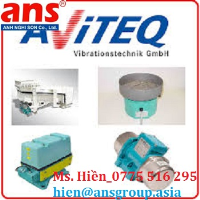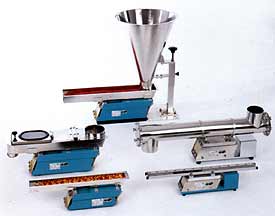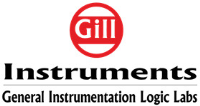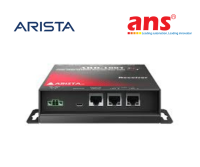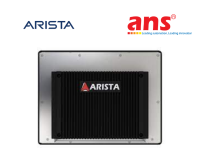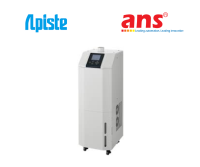
Parts Conveyor
Giá bán: Liên hệ
Hãng sản xuất: Aviteq
Danh mục: Máy móc & Hệ thống
Nhà cung cấp: Anh Nghi Son
Xuất sứ:
Bảo hành: 12
Parts Conveyor Equipment (Worm Conveyor)


AViTEQ parts conveyors for ordered arranging, individualizing and conveying are used in every case where mass parts have to be supplied to a magazine, a machine or to installation equipment, item for item, with a pre-determined orientation and time. AViTEQ has been the pioneer in Europe for more than 50 years in producing parts conveyor drives and devices.
Advantages of AViTEQ parts conveyors
- High level of conveying capacity with compact dimensions
- Operationally safe in continuous employment
- Synchronized two-mass vibration system
- No influencing of the vibration characteristics through the weight of the parts being conveyed
- Maintenance-free drive
- Conformity with all EC Guideline which affect the drives
- Also available for explosion-endangered spaces (Ex), as well as for 60 Hz power systems and other mains voltages
Construction and operating mode
Parts conveyors are two-mass vibration systems, which are synchronized to be close to resonant condition. The drive part includes the elements for vibration generation, such as electromagnet and leaf spring packages. The arrangement of the simple leaf springs determines the feed direction. Parts conveyors, which convey in clockwise direction, are designated with "R" (clockwise running). Parts conveyors which convey in anti-clockwise direction are designated with "L" (anti-clockwise running). In the case of an order, it is absolutely necessary that the feed direction be indicated. The pot is connected with the drive and is easily detachable. For individual itemization and alignment of parts, special mounted equipment (baffle plates) in the pot is necessary. Optimal design and coordination of the two-mass vibration system guarantee a uniform conveying action, which is also independent of the pot filling. The parts conveyor is supported on rubber dampers. Vibrations are thus transmitted only weakly to the environment.
Pot and drive selection
The normal shape of the pots is cylindrical, in certain cases also cone or step-shaped. Such a pot is selected if parts tend to become jammed between spiral paths located over one another. The selection of the pot diameter depends of the size of the parts to be conveyed. As a rule, it can be assumed that the largest dimension of the part should not exceed approx. 1/6 of the pot base diameter. With this, the drive is also virtually determined. The replacement of pots with similar diameter, however, with different weight is easily possible. For this, corrections are to be carried out on the compensation weights according to operating instructions. Stainless steel (1.4301; 1.4404) is employed as a material for the parts conveyor pots. Pots with 100 mm diameter are additionally produced from polyamide or aluminum. According to requirement, the pots can be provided with different linings, such as e.g. polyurethane, conveying brush material or Teflon.
Orientation of parts by means of baffle plate equipment (aligning elements)
Parts which move upwards on the spiral conveyor are disordered at first. However, they are supposed to leave separately and, above all, with a completely pre-determined orientation at the discharge. This is achieved by means of special mounted equipment, also baffle plates. They have the effect that incorrectly aligned parts drop back into the pot or are brought to another location. The prerequisite for this, however, is that the shape and center of gravity of the part are suitable for such alignment. In most cases this applies, nevertheless the alignment possibilities should be considered as early as the construction stage of the individual components, which must be later mass processed. In this way, complicated and expensive baffle plate equipment can often be avoided.
Parts, which can be aligned with simple baffle plates, can be conveyed with parts conveyors without pot lining with speeds up to 15 cm/s, while, in the case of complicated mounted equipment, the useful conveying speed is considerably lower. The optimal speed can be continuously adjusted. The attainable discharge output quantity, however, is dependent not only on the conveying speed. Also the size and the percentage number of parts which arrive on the spiral already with the correct orientation, or which can be brought into the required orientation, are important.
So that sufficient parts are always available for an automatic-sequence processing step, a parts conveyor is adjusted to a slightly higher discharge output quantity. Most of the parts fall back into the pot through corresponding mounted equipment. If this is not possible because of the part geometry or because of the baffle plate equipment, the parts conveyor must then be temporarily switched off. The overflow control guarantees this automatically.



